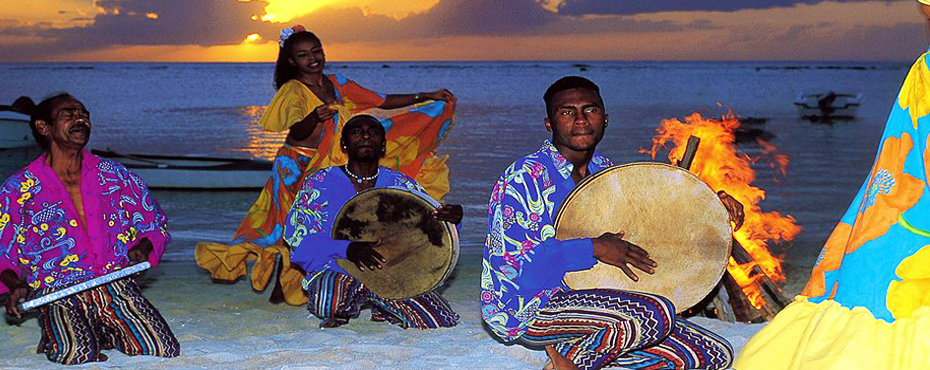Mauritius Sega
Discover the traditional music of Mauritius
The Mauritian Sega (Pronounced Saygah) is the best way to describe the deepest nature of the islanders: lively, colorful and traditional. The Sega is a dance that takes its roots from the ritual music of Madagascar and the mainland Africa. It is the Musical Expression of the Mauritian Way of Life.
The Mauritian Sega (Pronounced Saygah) is the best way to describe the deepest nature of the islanders: lively, colorful and traditional. The Sega is a dance that takes its roots from the ritual music of Madagascar and the mainland Africa. It is the Musical Expression of the Mauritian Way of Life.
Originally sung from slaves coming from Africa during the colonization era of Mauritius Island. Men and women who had been sold as slaves but whose souls had remained sensitive to music, the Sega is intensely emotional and expressed the tribulations of a subjugated, initially enslaved, people. Nowadays more consider as a folksong which has integrated itself within the framework of the Mauritian folklore.
It is a cry from the soul trying to transcend the miseries and heartaches of life or delivering a message of love and peace, while at the same time expressing the universal human desire for joy and happiness. It tells the joys and sorrows of the peasants and the fishing folks. It is a nostalgic heritage of the villagers. Its beats, gripping in intensity, now provide entertainment to Mauritians of all walks of life in towns and villages. Today the Sega and its beat are a part of every Mauritian's life.
Rhythm - The original sega tradition, developed by the enslaved populations from Africa and Madagascar, included rhythms strongly influenced by both the simple, repetitive beat of European dance music and the more complex rhythms and syncopation favored in African traditions. Later, a distinct change in the typical sega rhythms is occurred in response to music traditions brought from India, and modern sega rhythms are influenced by world traditions such as reggae. Though different eras and styles feature noticeably different rhythms, a strong, repetitive dance beat, enlivened by syncopations in the melody and bass line, remains the typical basic rhythmic quality of sega.
The original instruments are fast disappearing, making way for the more conventional orchestra. However, all along the coastal fishing villages the traditional instruments are still being used: The Ravane, which is a wooden hoop over which has been stretched a piece of goat skin; the Coco, (Maracas) which represents the percussion section; the Triangle, a triangular piece of metal which tinkles when tapped with an iron rod. The traditional guitar which was a single string instrument with an arc attached to an empty "Calebasse", has been replaced by the more sophisticated Hawaiian and electric guitar.
Stimulated and inspired by local rum, the fishing folks gather around a camp fire and give full vent to their emotions. Very often they dance without any music at all and are accompanied only by the sound of the Ravane, the tinkling of spoons, the rattling of seeds in a tin, and the clapping of hands of spectators who eventually join in the melee.
The dance itself is the rhythmic swaying of the hips to the pulsating rhythm of the Ravane. It starts with a gentle swaying, to a slow and solemn tune, which gradually rises, consuming the dancers and setting their bodies jerking, stretching and swaying with animated movements to keep pace with the ever-increasing tempo. The beat creeps inside you and as your body responds to the rhythm, you are carried to heights of ecstasy, generating a vibrating force that shakes the "lead" off your feet and inspires you to a high-spirited and unrestrained way of dancing. Tiring perhaps, but ex-hilarating! Never mind if your movement does not follow the rhythm ... just carry on dancing and you will be amazed how rhythm and movement synchronize afterwards.

